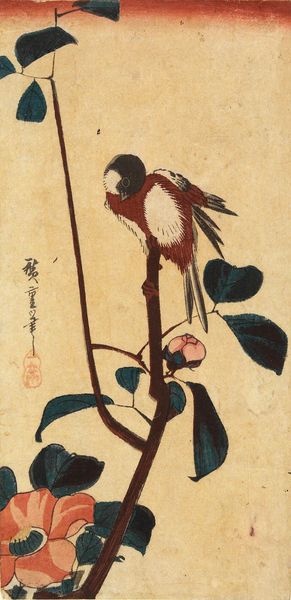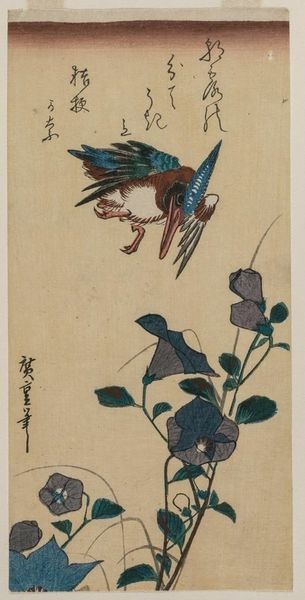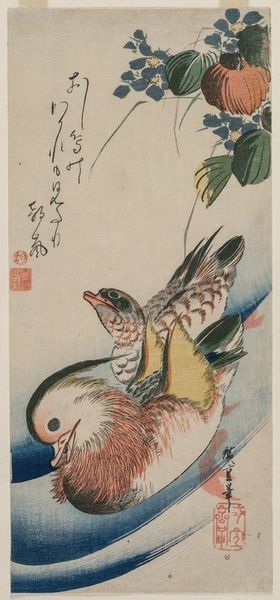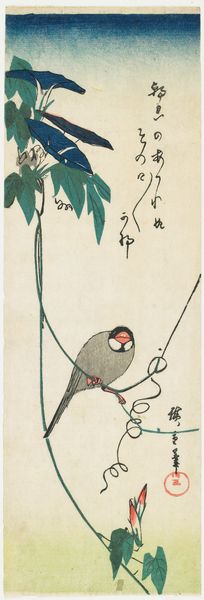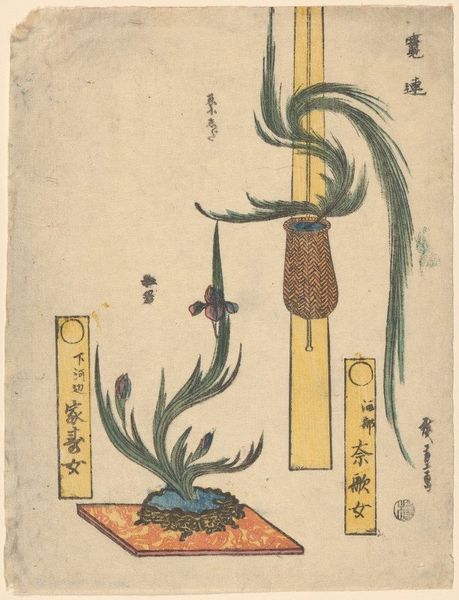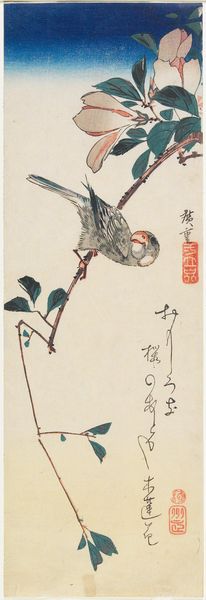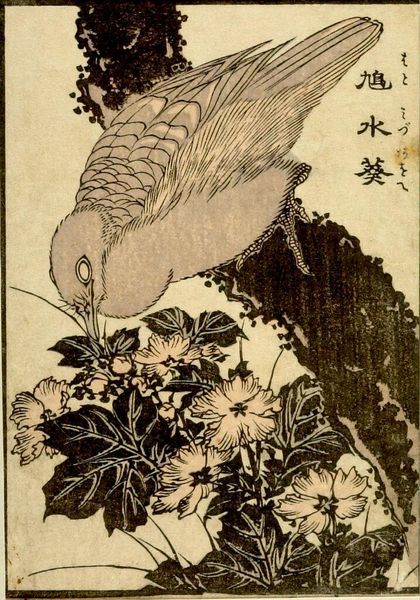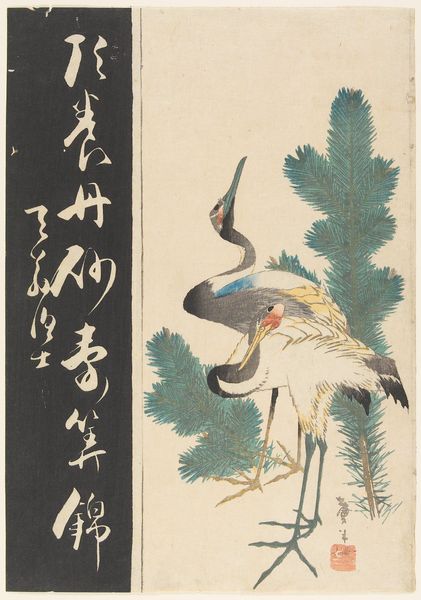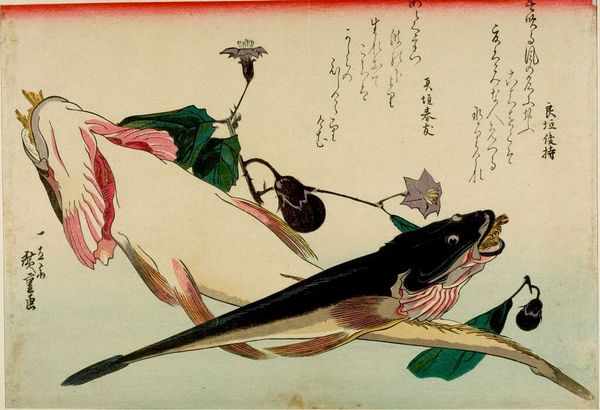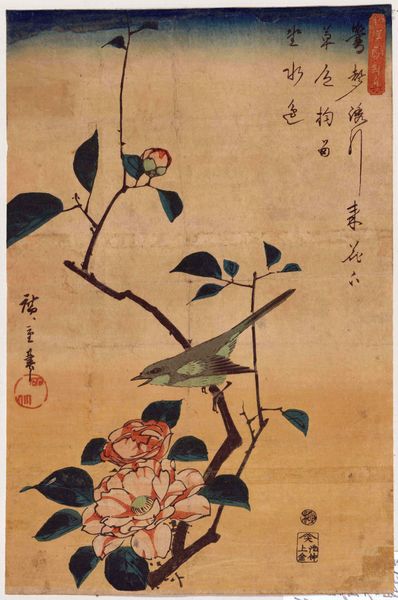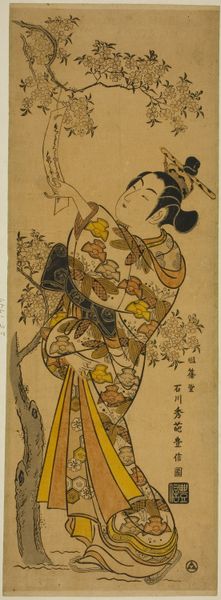
Dimensions: Chūtanzaku; 35.1 x 12.2 cm (13 13/16 x 4 13/16 in.)
Copyright: CC0 1.0
Editor: This is Utagawa Hiroshige’s “Persimmons and Japanese White-eye,” a print at the Harvard Art Museums. I love the muted colors and how delicate the bird looks. What strikes you about it? Curator: I am interested in how Hiroshige situates nature within systems of power. The Japanese white-eye, for example, is a symbol, often connected with themes of resilience but also the elite. What does it mean to depict this bird amongst persimmons, a food associated with both sustenance and delicacy? Editor: So, the choice of bird and fruit isn't just about aesthetics? Curator: Absolutely not. Consider how class and social structures impacted access to both nature and art in 19th-century Japan. Hiroshige is prompting us to think about those power dynamics. Editor: That's a completely different way of seeing it. I'll need to research that further. Curator: Precisely. Art is always in conversation with its context.
Comments
No comments
Be the first to comment and join the conversation on the ultimate creative platform.
